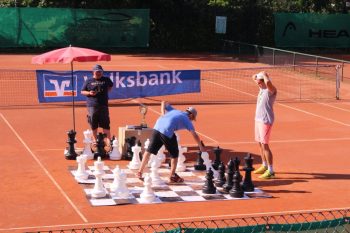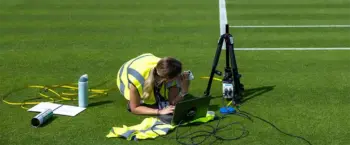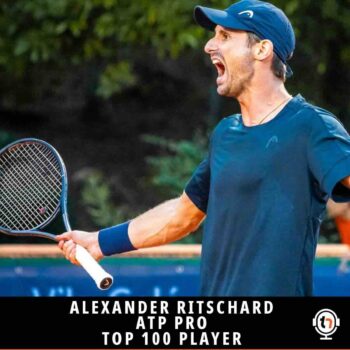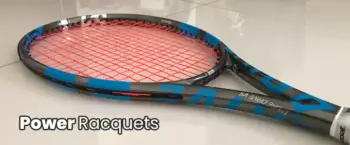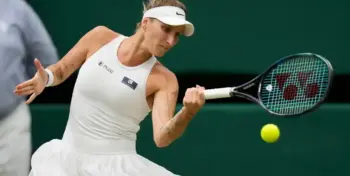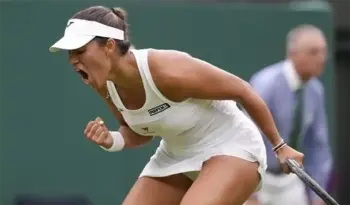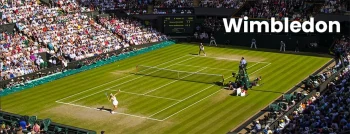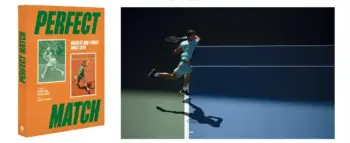Our prolific analyst and commentator, Evan Gaudreau is back with some thoughts on recent matches and events. We call it “Evan on the latest”.
For more of “Evan on the latest” and his other content, check out the analysis tag. Word over to Evan.
On the Djokovic vs Fokina match in Monte Carlo
When I watch a player who hasn’t been playing or is on a layoff, I look at a few things. One of them is the conversion rate on service game points. I’ll look at the conversion rate on the return games also.
For instance, it’s interesting if you look at Djokovic’s first service game and what he does with his +1 ball. When the point was played out, each first ball went to a different location. Never in the same spot twice in a row.
Let’s see what’s going on in set 2.
Man! So many errors by Djokovic!
Maybe he would play better if he was using a different racket. Let’s say, a Head Ti S6. Do you know the racquet? The oblong racquet that is shaped like the Queen of Hearts head from Alice in Wonderland.
What a bargain! (Until you play with it.)
There’s a story about a man, not satisfied, who left the racquet at the local tennis courts and sat against the fence all winter. People avoided it as if it was roadkill. Last I heard, a bum had been seen walking around the park with it on his foot, using it as a snowshoe.
Stats? Return deep down the middle
Stats drive me bonkers. Not all stats. Just the stats they throw up on the screen during matches. A stat just popped up about where Fokina’s 1st and Second serve placement is.
The bottom line is: if you want to play smart, return through the center. Nick Bollettieri taught that over 20 years ago. And I’m sure someone before him and so on. Take your shot on the return when the opportunity arises. Change speeds, Change spins. And go practice that for a set. Pick one of those options and hit the bricks.
Djokovic plays chess on a tennis court
The more I watch Djokovic, the more I see patterns. It’s as if he plays tennis like chess because there is a beginning, a middle, and an end.
Yes! Games can only have four points, but they can have six or eight, and so on.
Take a game with six points, for instance. I see Djokovic play the first two sets of points a particular way. The second two are a little different and the last two different from the others. Then I’ll see one particular primary pattern in the next game. There’s a bit more to it. But it’s frickin cool to watch and break down. The number of patterns he has and can play deliberately is pretty cool.
I’ve never seen it done the way he does it. The closest one is Nadal. And Medvedev is next in line. Then Brooksby.
Returns
One aspect I’ve been looking at this year is the return of serve. And what I’ve been noticing (with the weaker returners) is that their body is not going forward at contact. They’re either lifting at contact, causing timing issues, or “popping “up because of the hop split forward, which again messes with the timing.
How can the big three come back and play so well?
Have you ever wondered why good players can get back to a decent level, quickly? Whether they’re returning from injury or “holiday?”
Federer, Djokovic, Nadal. And why some players don’t? What is the secret sauce?
During this match (Djere vs. Djokovic in Belgrade), Djokovic struggles when he is game point down. Last week too. The thing I like about Djokovic is “big picture” thinking. Because of the layoff and lack of tournament matches, he is “experimenting” on game points and trying to get his “nerves,” timing, and footwork under check. He’s thinking of peeking at the end of May.
What else could he do? (He still won the match).
Does Kecmanovic have a sense of humor?
At this point, after watching Kecmanovic, I’m wondering if he has a sense of humor. He looks so serious. But almost too serious. So severe, I think it could hold him back from winning more matches, yet the reason he’s winning more matches is that focus. It’s like a double edge sword. I’m no doctor, but do you think if you grabbed a sword by the blade, you could still wield it. I’d rather have a double-sided ax. At least there would be somewhere to hold.
40-0 Djokovic, and what does he do? Serves T and shifts for the down-the-line return and hits a sharp angle crosscourt that is missed long. That’s what happens when you think ahead and pay attention to your opponent’s patterns.
How?
For starters, stop thinking about your strokes so much. Or your breathing (You can breathe and relax…but be a grown-up about it. Don’t hyperventilate in the back of the court like a five-year-old who didn’t get his ice cream).
That was a Cheap shot. But someone has to speak up.
In Tsitsipas’ head (from the match vs Alcaraz in Barcelona)
Tsitsipas is a player that is full of mental anguish. I am not Freud, so I don’t have the answers. But I can see it, just like you can also.
Is he overthinking? Is he underthinking? Who’s in his head telling him what to do? Is HE making the choices? Or is his father? Does it matter?
I’m just hypothesizing! But something mental is going on, and it has nothing to do with the stroke.

